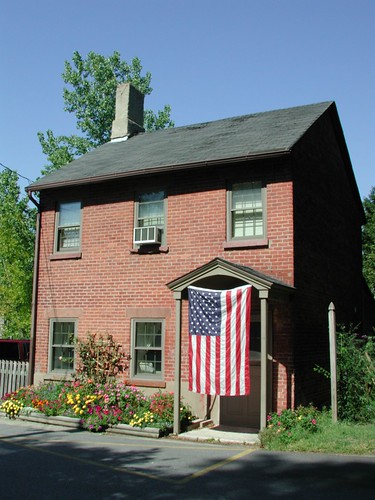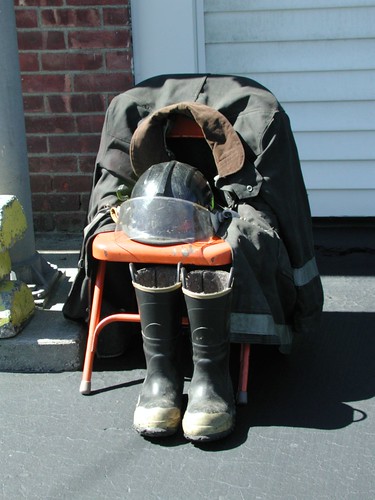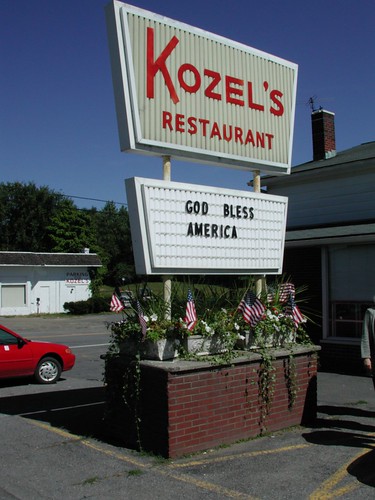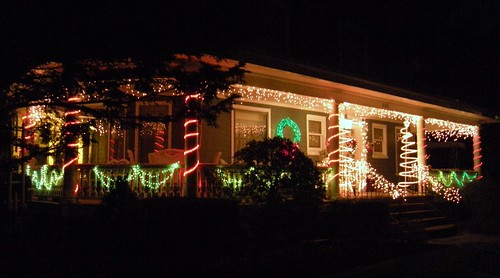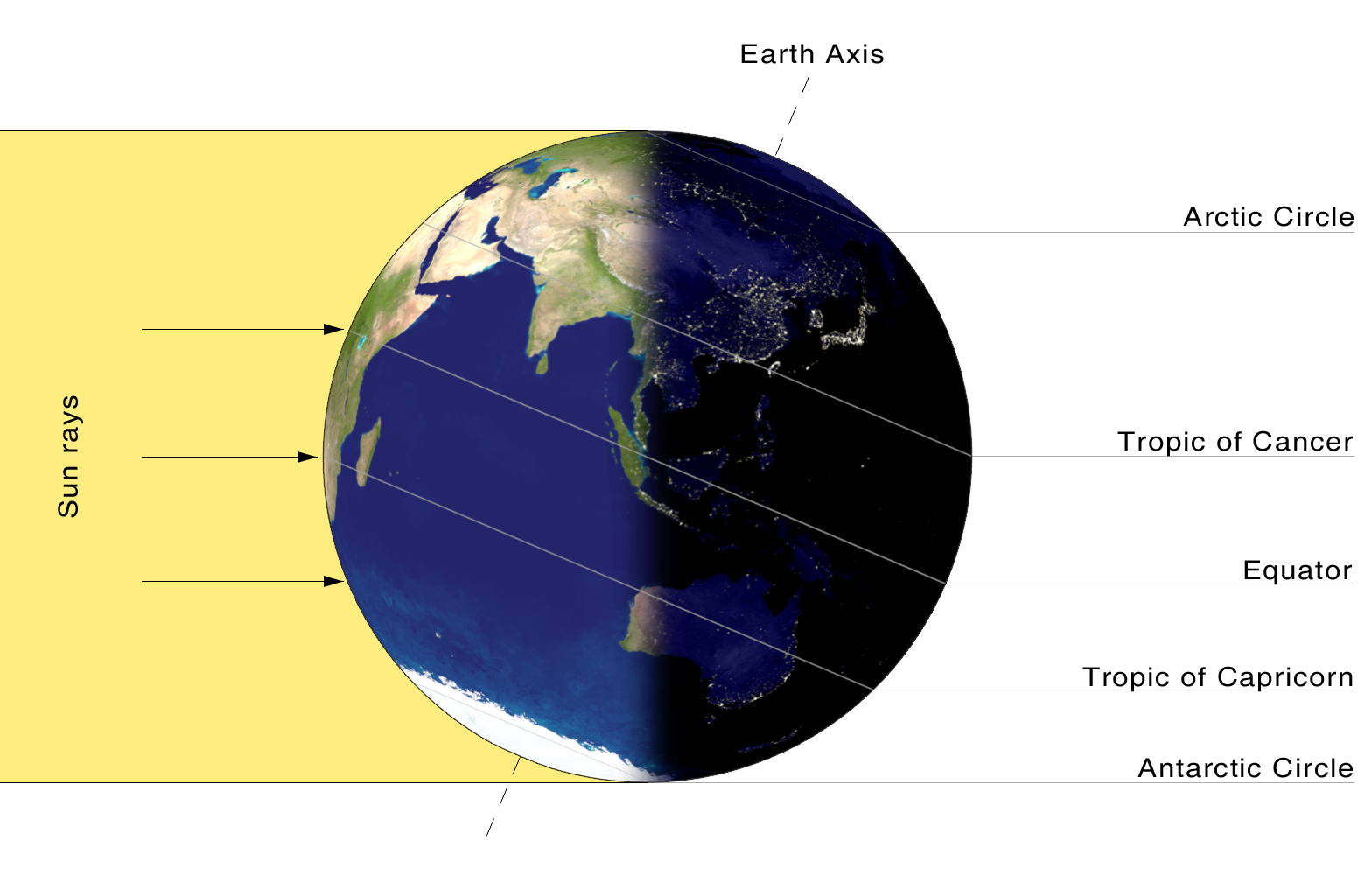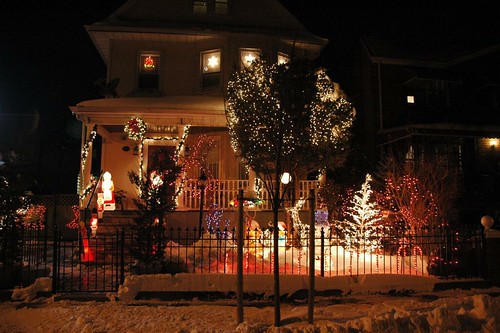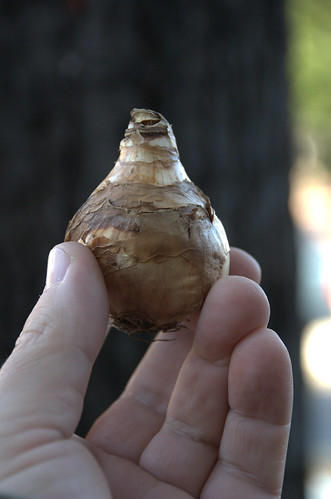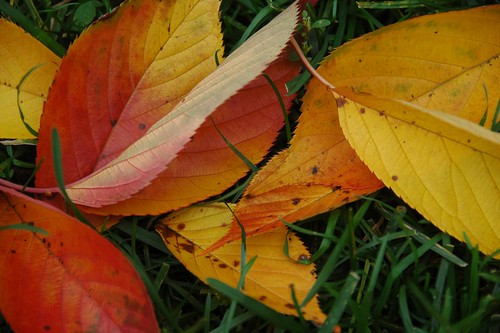Let’s get the usual question out of the way. This is where I was the morning of September 11, 2001.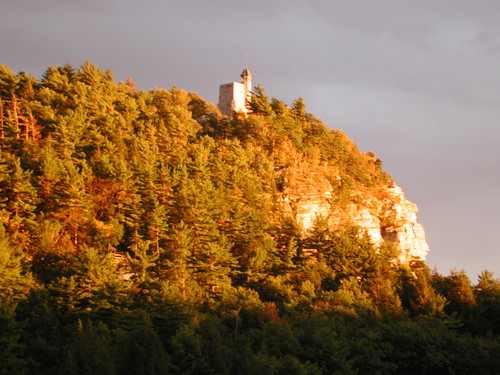
This is Skytop Tower at Mohonk Mountain House at sunset the previous night. Blog Widow and I had planned a week-long vacation upstate, starting at Mohonk. The morning of September 11, we hiked up to Skytop. A rustic retreat, Mohonk had no televisions or radios in the rooms. As we left the massive wooden structure to go out hiking, I noticed people huddled around the few televisions in some of the common rooms. I thought nothing of it at the time. I later realized we left just after the first attack.
We hiked around the lake, then up to Skytop, and climbed up into the tower. We had the trails almost to ourselves. As we came down the tower, I sang loudly, my voice echoing through the stone structure: “I love to go a-wandering …” Part of the way, we encountered another hiker coming up the stairs. I stopped singing and said, “excuse me.” Only then did he lift his head to us, tears streaming down his face. “Did you hear what happened?” “No.” “They flew a plane into the World Trade Center.”
We hiked back. When we returned to the buildings, the common rooms were packed with people, watching the news on every available television. We went back to our room. Blog Widow went back downstairs to find out what happened. I had brought my laptop with me, so I tried getting online. He returned to tell me the World Trade Center had collapsed. I was incredulous; I couldn’t imagine what that meant. By the time I went downstairs myself, both towers were gone. I sat and watched those horrible images for the first time.
We decided to hold to our vacation plans for the week, somber though it was. There was nothing we could do back home. My workplace downtown, blocks from Ground Zero, would not reopen for two weeks. Reminders met us everywhere we went. And everywhere we went, we were ambassadors for New York City. When we told people where we were from, as often as not, they broke down crying. We were their reminders.
We drove back to my apartment in Brooklyn that Sunday. I was startled when I saw the first airplane flying overhead; with all flights grounded, the skies had been empty since the attacks. I got my first glimpse as we drove along the Brooklyn-Queens Expressway: twin trails of heavy smoke, orange and red from a setting sun. I burst into tears. Somehow, I had expected the fires to have burned out by then.
When we were allowed to return to work, I got my first personal glimpse of Ground Zero.
The fires continued to burn for months, through the winter, into 2002. For weeks, until a few heavy rains washed the city, everything was covered in ash and dust. It collected in drifts along sidewalks and gutters. Every day I went to work, for months, I smelled and breathed the smoke. All of Downtown Manhattan was a crematorium.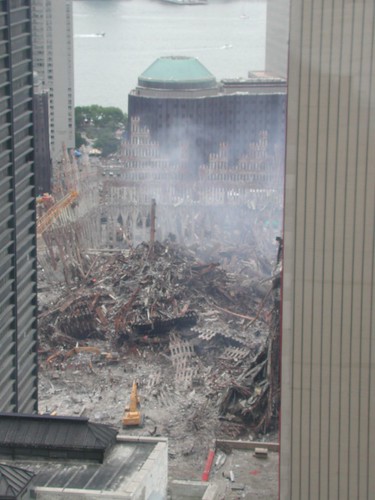
Thousands of shrines and memorials appeared and grew throughout the city. The most heart-breaking were those around St. Vincent’s Hospital, which prepped for massive casualties, but received very few. Few who didn’t walk, or run, away survived. Even today, remains have yet to be found for over 1,000 people murdered in the attacks.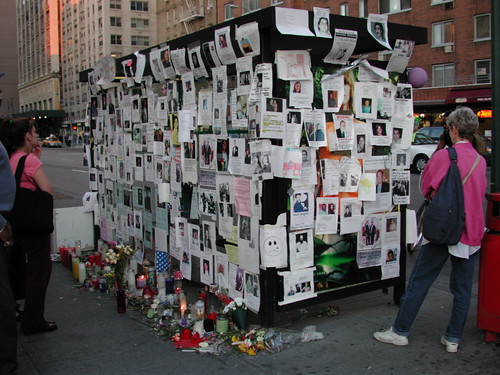
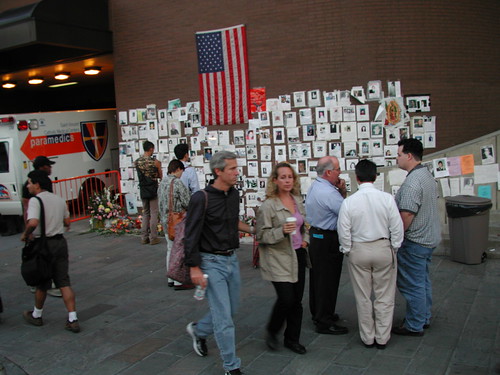

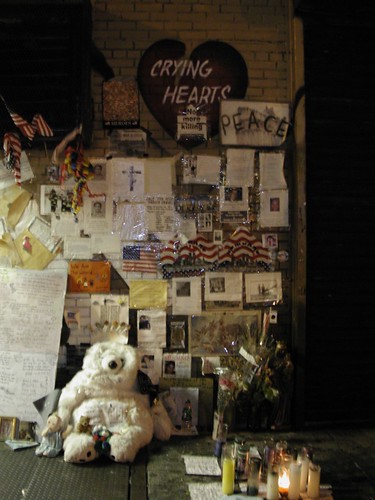
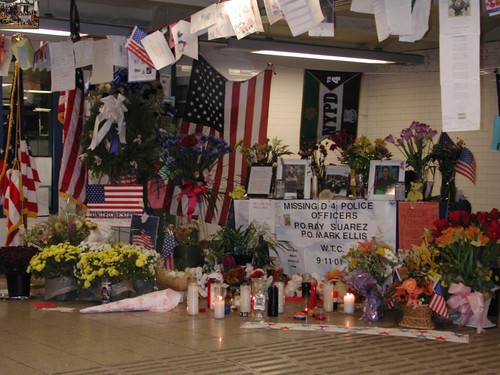
The ash washed away, the fires died, the smoke cleared. The candles and posters gradually eroded. A year after the attacks, the memorials which covered the fences around St. Paul’s Chapel were carefully removed and preserved. Eventually, even the basin which held the foundations of the towers and other structures on the site was emptied. As the direct evidence of what happened faded, new symbols emerged. For me, these are far more powerful and meaningful than any flag or banner.
Tonight, the Tribute in Light will shine again.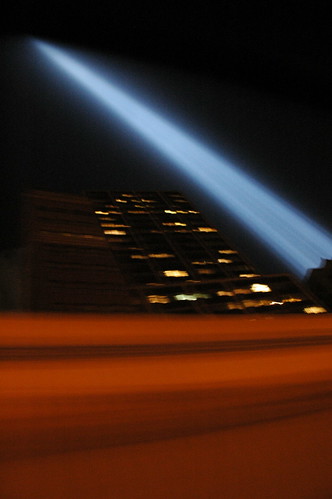
The Sphere, the sculpture by Fritz Koenig that had held place of prominence in the center of the WTC Plaza, was heavily damaged in the towers’ collapse, but survived. It’s been on display at Battery Park for the past few years. It will be returned to the Memorial for its permanent home.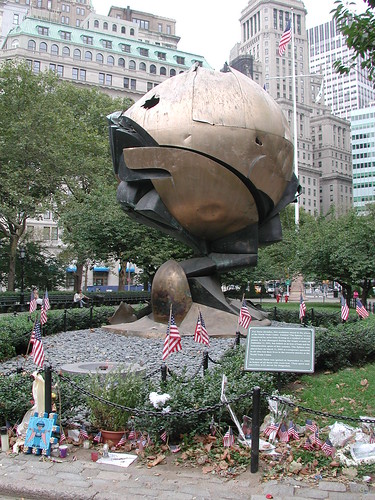
Another sculpture, Steve Tobin’s “Trinity Root,” was placed in the courtyard of Trinity Church, two blocks from Ground Zero. It was cast from the roots of a Sycamore that stood in the cemetery of St. Paul’s Chapel, a few blocks north, and directly across the street from Ground Zero. The tree was destroyed when the towers fell, but it shielded the church itself from even greater damage.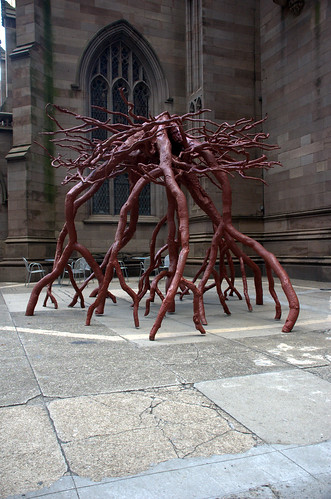
St. Paul’s Chapel has been a moving memorial all these years. It’s filled with an ever-changing display of artifacts and remembrances from all over the world.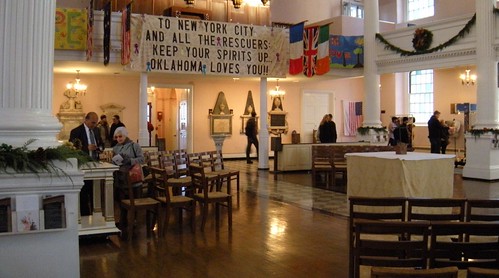
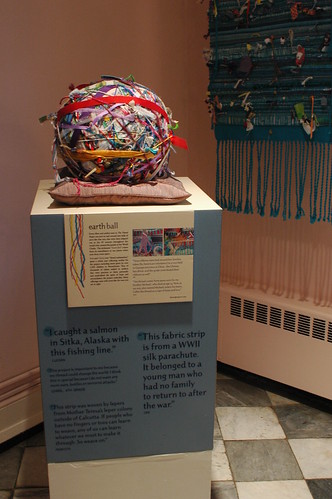
And finally, the official, multi-million dollar memorial will occupy the footprints of the towers and the plaza between them. Here’s a model of the National September 11 Memorial at the Preview Site on Vesey Street, across the street from St. Paul’s near the corner of Church Street at Ground Zero in Downtown Manhattan.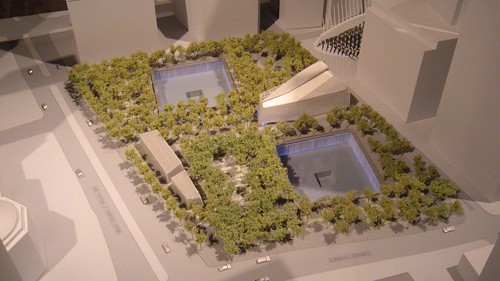
The first of 400 trees for the grove were planted just two weeks ago, in time for today’s observations. These are Quercus bicolor, Swamp White Oaks. The other species will be Liquidambar styraciflua, Sweet Gum. A forest and waterfalls will take the place of devastation, natural elements no less powerful and evocative for being constrained to an urban grid. They will also remind me of where I was when I first heard of the attacks. A garden as the ultimate embodiment of reflection and recovery.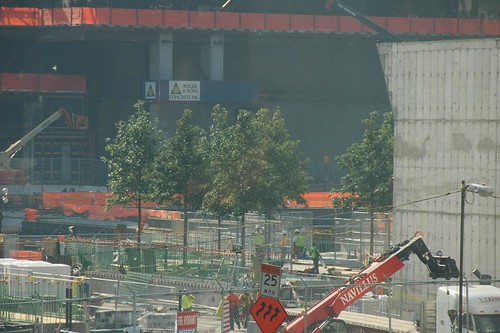
Related Content
Growing 387 trees for the National 9/11 Memorial, 2009-02-19
Seven Years, 2008-09-10
15 Years Ago Today …, 2008-02-26
The National September 11 Memorial at the World Trade Center, 2007-09-11
In the Shadow (How shall my heart be reconciled to its feast of losses?), 2007-08-28
The Daffodil Project: Grief & Gardening #5, 2006-11-26
Grief & Gardening #2: “Ths Transetorey Life”, 2006-09-09
Grief & Gardening #1: 1, 5 and 25, 2006-09-04
Without God, 2001-10-15
This Week in History, 2001-09-14
Gardeners for Recovery Cobblestone Campaign
Thanks to the Contributors to Gardeners for Recovery, 2007-11-21
Gardeners for Recovery is on its way!, 2007-11-13
Announcing the Gardeners for Recovery Cobblestone Campaign, 2007-09-28
Gardeners for Recovery, 2007-09-01
My photos
My photosets on Flickr:
Trinity Root
9/11 Memorial Preview Site and St. Paul’s Chapel
Tribute in Light, September 11, 2007
Grief & Gardening #2: Five Years After
September 11, 2001
Links
National September 11 Memorial & Museum
Trinity Root
Uprooted in the Attacks, Now Planted in Bronze, Randy Kennedy, NY Times, 2005-07-06

